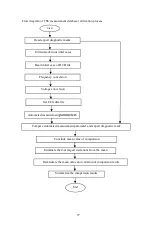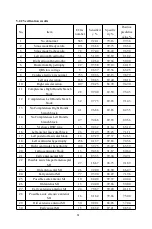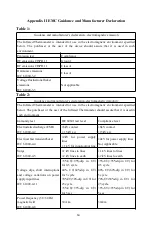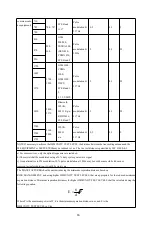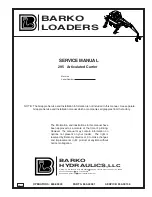
.
66
communicatio
ns equipment)
710
704– 787
LTE Band
13,17
Pulse
modulation b)
217 Hz
0,2
0,3
9
745
780
810
800
–
960
GSM
800/900,
TETRA 800,
iDEN 820,
CDMA 850,
LTE Band 5
Pulse
modulation b)
18 Hz
2
0,3
28
870
930
1720
1 700 –
1 990
GSM 1800;
CDMA
1900;
GSM 1900;
DECT;
LTE Band 1,
3,
4, 25; UMTS
Pulse
modulation b)
217 Hz
2
0,3
28
1845
1970
2450
2 400 –
2 570
Bluetooth,
WLAN,
802.11 b/g/n,
RFID 2450,
LTE Band 7
Pulse
modulation b)
217 Hz
2
0,3
28
5240
5 100 –
5 800
WLAN
802.11
a/n
Pulse
modulation b)
217 Hz
0,2
0,3
9
5500
5785
NOTE If necessary to achieve the IMMUNITY TEST LEVEL, the distance between the transmitting antenna and the
ME EQUIPMENT or ME SYSTEM may be reduced to 1 m. The 1 m test distance is permitted by IEC 61000-4-3.
a) For some services, only the uplink frequencies are included.
b) The carrier shall be modulated using a 50 % duty cycle square wave signal.
c) As an alternative to FM modulation, 50 % pulse modulation at 18 Hz may be used because while it does not
represent actual modulation, it would be worst case.
The MANUFACTURER should consider reducing the minimum separation distance, based on
RISK MANAGEMENT, and using higher IMMUNITY TEST LEVELS that are appropriate for the reduced minimum
separation distance. Minimum separation distances for higher IMMUNITY TEST LEVELS shall be calculated using the
following equation:
P
d
6
E
Where P is the maximum power in W, d is the minimum separation distance in m, and E is the
IMMUNITY TEST LEVEL in V/m.






